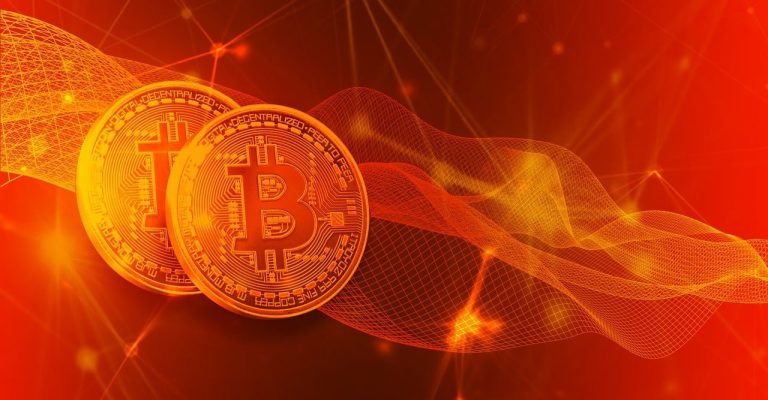Transportation Industry Security introduction
The transportation sector is the backbone of global commerce and daily life, ensuring the efficient movement of goods and people. As digital transformation sweeps across various industries, the transportation sector faces evolving cybersecurity challenges. This comprehensive guide explores the key vulnerabilities and offers actionable solutions to enhance transportation industry security.
The Vital Role of Transportation
Transportation is a critical infrastructure that supports economic growth, facilitates social interactions, and ensures access to essential services. The advent of technological advancements has significantly improved the efficiency and cost-effectiveness of transportation systems. However, these advancements also introduce new cybersecurity risks that demand immediate and strategic attention.
Understanding the Complexity of Modern Transportation Systems
Modern transportation industry security systems are intricate networks comprising traditional elements like vehicles and infrastructure, alongside advanced technologies such as Internet of Things (IoT) devices, cloud-based services, and automated systems. This complexity poses significant security challenges, as each component represents a potential vulnerability.
The Challenge of Interconnected Systems
As transportation industry security systems become increasingly interconnected, the potential for cyber threats grows. A single vulnerability can be exploited to compromise multiple systems, underscoring the need for comprehensive security measures.
Solution: Modular Security Architecture
A modular approach to security architecture can effectively address the complexity of modern transportation industry security systems. By breaking down the system into smaller, more manageable components, security experts can focus on specific vulnerabilities within each module. This method prevents a single point of failure from cascading into a systemic issue. The NIST Cybersecurity Framework provides a robust model for implementing this approach, offering guidelines for compartmentalizing and securing different elements of the system.
The Legacy Systems Dilemma
In many regions, transportation infrastructure relies on decades-old technology, presenting significant security vulnerabilities. These legacy systems are often inefficient and lack the necessary safeguards against modern cyber threats.
The Burden of Legacy Technology
The transportation industry security is largly based on legacy systems, while foundational to current operations, are not designed to withstand contemporary cybersecurity threats. Their outdated protocols and software make them susceptible to attacks, which can disrupt services and compromise data integrity.
Solution: Phased Modernization
Upgrading legacy systems is essential but can be financially and logistically challenging. A phased modernization approach allows organizations to prioritize and allocate resources effectively. By identifying and upgrading the most vulnerable components first, transportation agencies can incrementally enhance security while managing costs. This strategy also minimizes operational disruptions, ensuring a smooth transition to more secure systems.
The Double-Edged Sword of Connectivity
The increased connectivity in transportation systems, while improving efficiency and coordination, also exposes them to greater cyber risks. Cybercriminals can exploit a single vulnerability to access interconnected systems, amplifying the impact of an attack.
The Importance of Comprehensive Security Measures
To counter the risks associated with interconnected systems, a holistic security strategy is required. This includes implementing multiple layers of defence to protect against various types of cyber threats.
Solution: Defence in Depth
Defence in depth is a security principle that involves deploying multiple layers of security controls throughout an information technology system. This comprehensive approach includes firewalls, intrusion detection and prevention systems, multi-factor authentication, and data encryption. By implementing diverse security measures, organizations can ensure that even if one layer is breached, others still are intact to protect the system.
The Human Element: Training and Awareness
Cybersecurity is not solely a technological issue; the human element plays a crucial role. Employees who lack proper training and awareness can inadvertently become weak links in the security chain.
Addressing Human Vulnerabilities
Employees are often targeted by cybercriminals through phishing attacks and social engineering tactics. Without adequate training, they may unknowingly compromise security by clicking on malicious links or sharing sensitive information.
Solution: Continuous Education and Training
Regular training programs are essential to foster a culture of cybersecurity awareness among employees. These programs should include simulated cyber-attack scenarios to prepare staff for real-world threats. Continuous education ensures that employees stay informed about the latest cyber threats and best practices for mitigating them. Additionally, assessments and certifications can verify the effectiveness of training programs, ensuring that employees possess the necessary skills to protect the organization.
Data Privacy: A Critical Component
Modern transportation systems generate vast amounts of data through IoT devices, telemetry systems, and other data-generating elements. This data, if not properly secured, can pose significant privacy and security risks.
The Risks of Data Exposure
Data collected by transportation industry security systems can include sensitive information such as passenger details, operational metrics, and financial transactions. Unauthorized access to this data can lead to privacy breaches, financial loss, and reputational damage.
Solution: End-to-End Encryption and Strict Access Control
Securing data through end-to-end encryption ensures that information is protected from the point of origin to its final destination. This method prevents unauthorised parties from intercepting and deciphering the data. Additionally, implementing strict access control measures ensures that only authorized personnel can access sensitive information. This reduces the risk of data breaches and enhances overall system security.
The Impact of Cyberattacks on Transportation
Cyberattacks on transportation industry security systems can have severe consequences, affecting not only the targeted organization but also the broader public. Disruptions can lead to delays, financial losses, and compromised safety.
Case Studies of Notable Cyberattacks
- The Maersk Incident (2017): A ransomware attack on the global shipping giant Maersk led to widespread operational disruptions, costing the company an estimated $300 million. The attack exploited vulnerabilities in the company’s IT infrastructure, highlighting the need for robust cybersecurity measures in the maritime industry.
- San Francisco Muni Ransomware Attack (2016): The San Francisco Municipal Transportation Agency fell victim to a ransomware attack, which forced it to offer free rides to passengers while it worked to restore its systems. This incident underscored the potential for cyberattacks to disrupt public transportation services and impact daily commuters.
The Role of Government and Industry Regulations
Government and industry regulations play a crucial role in shaping transportation cybersecurity strategies. Regulatory frameworks establish standards and guidelines that organizations must follow to ensure the security of their systems.
Key Regulations and Standards
- NIST Cybersecurity Framework: Provides a comprehensive set of guidelines for managing and reducing cybersecurity risks. The framework is widely adopted across various industries, including transportation.
- ISO/IEC 27001: An international standard for information security management systems (ISMS). It specifies the requirements for establishing, implementing, maintaining, and continually improving an ISMS.
- Transportation Security Administration (TSA) Guidelines: The TSA provides specific guidelines for securing transportation systems in the United States, focusing on critical infrastructure protection.
Solution: Compliance and Adaptation
Organisations must stay abreast of relevant regulations and ensure compliance to avoid penalties and enhance security. Regular audits and assessments can help identify gaps in compliance and guide necessary adjustments. By adhering to established standards, transportation agencies can build resilient security frameworks.
Emerging Technologies and Future Trends
The transportation industry is continually evolving, with emerging technologies offering both opportunities and challenges for cybersecurity.
Autonomous Vehicles and AI
Autonomous vehicles and artificial intelligence (AI) are revolutionizing transportation. However, these technologies also introduce new security concerns, such as the risk of hacking and data manipulation.
Solution: Proactive Security Measures
Integrating security measures during the development phase of autonomous vehicles and AI systems is crucial. This includes secure coding practices, regular software updates, and thorough testing for vulnerabilities. Collaboration between manufacturers, cybersecurity experts, and regulators can foster the development of secure and resilient technologies.
Blockchain for Secure Transactions
Blockchain technology offers potential solutions for secure transactions and data integrity in transportation. Its decentralized nature makes it difficult for cybercriminals to alter data.
Solution: Implementing Blockchain
Adopting blockchain technology can enhance the security of financial transactions, supply chain management, and data sharing within the transportation industry. Pilot projects and research initiatives can help identify the most effective applications of blockchain technology.
Conclusion
Transportation industry security is a multifaceted and critical field that impacts everyone, from daily commuters to global logistics companies. The challenges are complex, but by adopting a multi-layered approach involving technological upgrades, human resource training, and comprehensive security measures, we can build a more secure future for the transportation sector.
References
ENISA Smart Infrastructures and Cybersecurity
CISA Transportation Systems Sector














